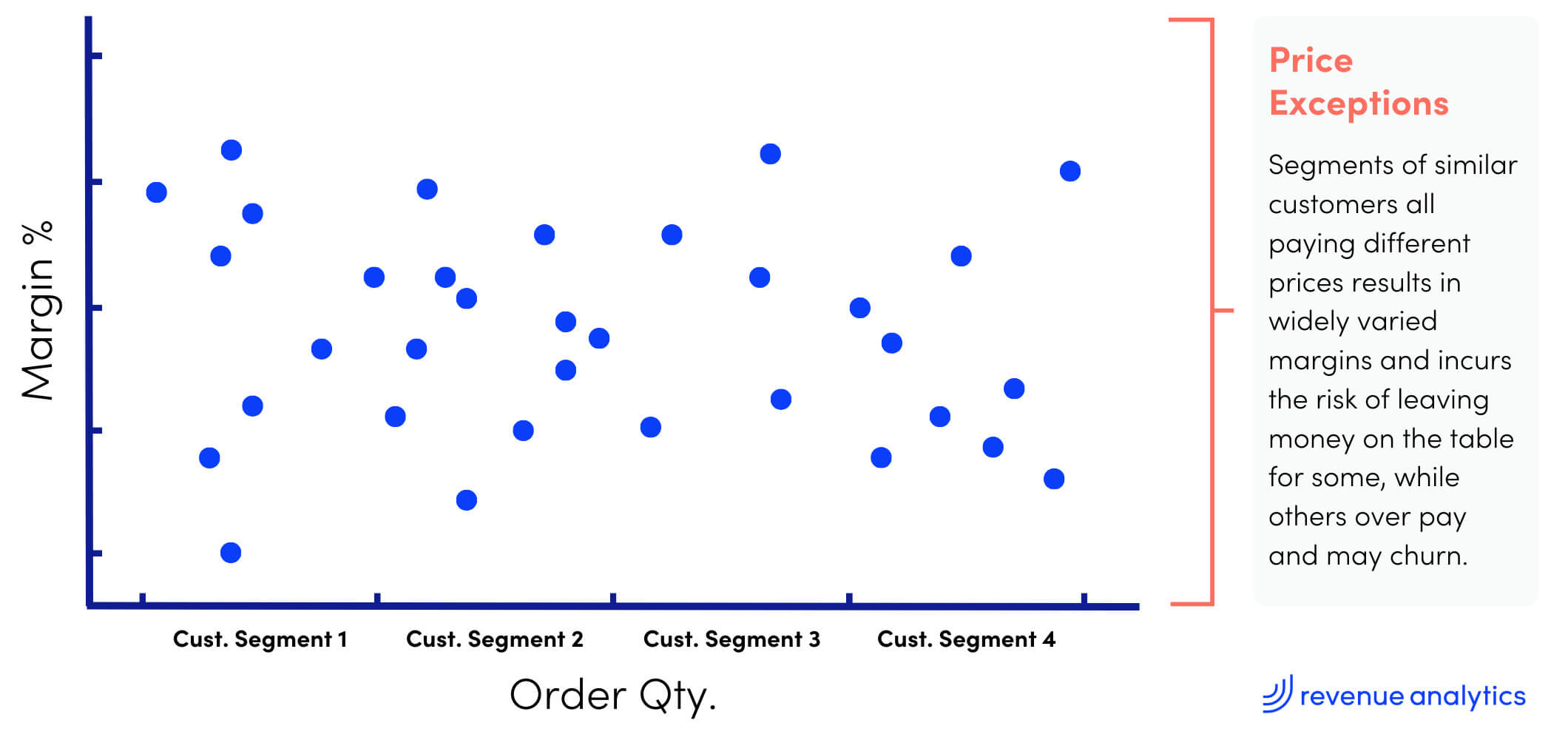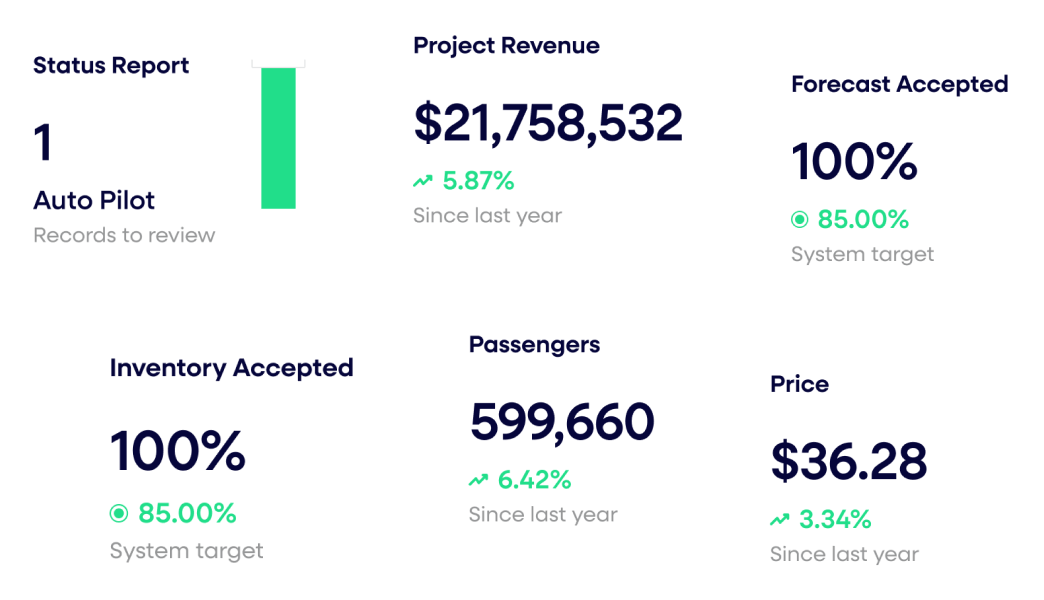[Guide] Do You Have a Pricing Problem?

Symptom (noun): a sign or the existence of something, especially of an undesirable situation.
We all know what symptoms are. While the term is often used in the health and wellness field, it also has a place in your business. There are symptoms felt across your organization every day, ranging from minor to major, that hint at the existence of something deeper.
Some of the most prevalent symptoms we see across a wide variety of manufacturers and distributors have one root cause in common: pricing. Pricing problems can be extremely difficult to identify on their own, but starting by probing into their symptoms can make it easier to connect the dots.
Leverage your content to achieve stronger revenue outcomes
Over the last 18 years working directly with manufacturers and distributors, we’ve discovered several prominent symptoms of pricing problems. Now we’re sharing them, including questions to ask along the way, so you can recognize and begin to solve pricing problems within your organization.
Financial Impact
One of the most effective ways to assess financial performance is with profit change over time with granular comparisons. This is especially true for larger businesses, where it’s more difficult to glean insights from looking at large sums of total profit year over year.
Instead, start by comparing profits from top customer or product segments. For example, how profitable were your top 50 customers this year compared to last year? Or if your business is more product-line focused, what profitability changes did your top product category experience year over year or quarter over quarter?
By examining different segments over time, you can isolate and identify the levers behind significant profitability changes and confirm if pricing is the primary culprit.
High-Level Financial Decline
Questions to ask:
- Are our margins shrinking?
- Are we keeping up with inflation or deflation?
Starting with the most readily apparent, if there are even high-level financial struggles, it’s time to look at pricing. Maybe prices were raised with inflation, but now with pockets of deflation you’re giving unnecessary concessions back to customers who are willing to pay.
Regardless of market conditions, margins are the best reference point to help determine if pricing is the root cause.
Volume and Market Share
Questions to ask:
- Are we losing ground in the market?
- Is volume fluctuating enough to affect revenue consistently?
Regardless of how your organization tracks volume and market share, persistent changes can be an indicator of pricing problems. Inconsistent pricing is a common cause – pricing yourself out of the market, over-discounting, or both – and can compound over time if erratic pricing adjustments are made to compensate for volume changes.
Sales Effectiveness
In most cases, your sales organization doesn’t need more training or a new CRM to improve their effectiveness. It’s more likely that issues with sales effectiveness are another symptom of a pricing problem.
Deal Cycle Time
Questions to ask:
- What is our standard deal cycle time (from opportunity to close)?
- Is our standard deal cycle time extending? If so, to what extent?
If the answer to the second question is yes, pricing isn’t always the culprit – but it’s often a strong contributing factor. Long or extended deal cycle times can be a symptom of not knowing the right price.
You have many different products and customers, so one inflexible price won’t work across the board, but having a more accurate starting place cuts down the time it takes to quote and close deals significantly.
It takes time to go back and forth between potential customers and approvals, which adds up. By no fault of our sales reps, this can become a vicious cycle that depletes trust in the pricing itself, not to mention buy-in from sales.
Sales Confidence and Buy-In
Questions to ask:
- How often do your sales reps think your price isn’t competitive?
- What percentage of total deals are you confident in having the right price for?
It’s rare when sales reps report back that prices are too low. But hearing persistent debate from those who are closest to the market is another sign of potential pricing problems.
Custom Quotes and Special Agreements
Questions to ask:
- How many of our customers have custom quotes or special agreements?
- Have at least 10 deals for a given product varied significantly in price?
We call this a price exception. When every customer gets a special price, you quickly end up with substantial variability between what similar customers are paying for similar products. Plotting these prices reveals an uncorrelated scattershot, where customer segmentation makes it easy to see just how much pricing differs when all other customer attributes are related.
If the price of a top selling product ranges from $25 to $125, how can all those prices be the right price?
Operations
Pricing updates are time-consuming, error prone, and can be made more difficult by system limitations. And a high volume of custom quotes and special agreements only adds to the time and resources required for individual updates.
Price Management and Execution
Questions to ask:
- Who is responsible for updating prices when they change? Is it a manual process?
- How much time and other resources is it taking to keep pricing up to date?
This pricing problem pain becomes more pronounced the more SKUs you have. Take 75,000 SKUs, for example. If someone or a small team within your organization must manually upload prices every time they change, that process can take weeks. And however long it takes, your sales team is using now outdated pricing in the meantime.
Wrapping Up
Being able to identify and address the symptoms of pricing problems is critical to sustainable profitability. By taking a closer look below the surface of financial performance, sales effectiveness, and pricing operations, you can pinpoint the root cause of complex pricing problems.
Don’t let these symptoms fester. Take control of your efficiency and profitability with a comprehensive pricing strategy.
If you suspect you might have a pricing problem and want an expert opinion, book time with our team here.
Last updated on October 24, 2025







